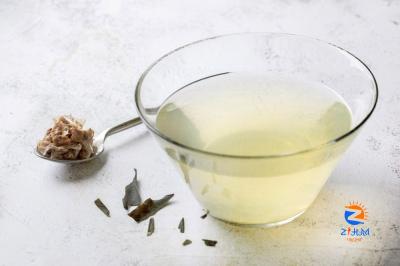
[ad_1]

KUALA LUMPUR, June 15 — The first time I made dashi, that quintessential “golden stock” of Japanese cuisine, was at a cooking class in Kyoto nearly 10 years ago.
It felt intimidating at first, to handle ingredients we had never seen in person before: thick, gnarly sheets of kombu (dried kelp seaweed) and a hard slab of dried bonito (skipjack tuna) that looked more like wood than fish.
The latter is shaved into the paper-thin flakes called katsuobushi — the bonito flakes we recognise as toppings for donburi (rice bowls) and okonomiyaki (grilled savoury pancakes).
True, the ingredients themselves might have seemed alien at first glance, but the flavourful stock that was created when simmered with water was not.
Advertisement
Dashi forms the base for so many classic Japanese dishes, such as soba noodles with tempura, chawanmushi, tamagoyaki and agedashi dofu. You would have tasted it if you had eaten at a Japanese restaurant, whether you knew it or not.
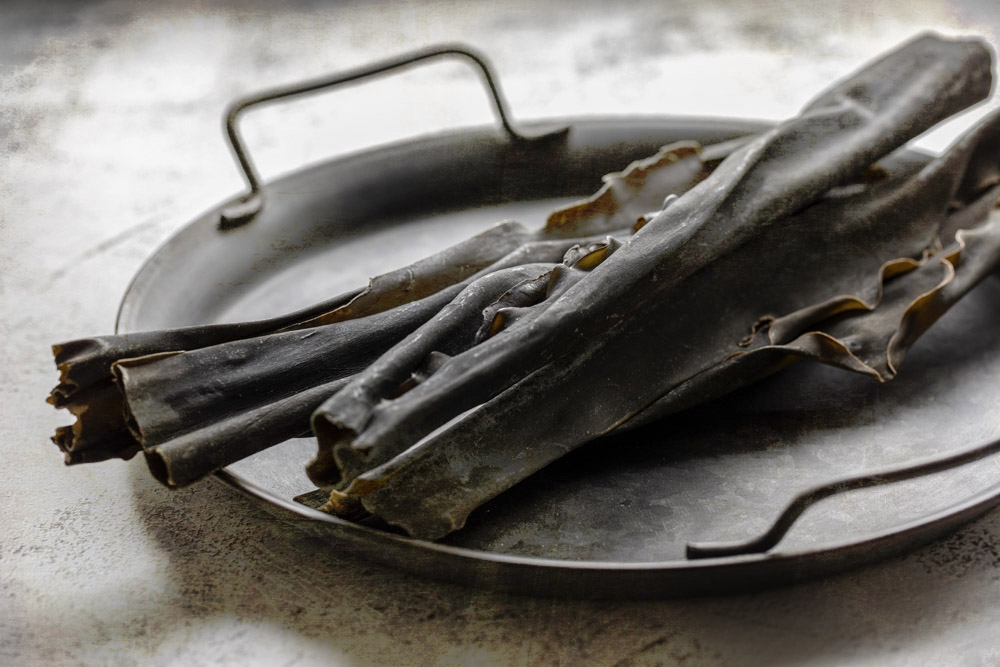
‘Kombu’ (dried kelp seaweed).
We began the class by making dashi stock. First we combined water and kombu in a pot, bringing it to a simmer over low heat. After bringing the water almost to a boil, we removed the spent kelp from the pot.
Then we added the katsuobushi and brought the stock to a rolling boil this time, before turning the fire off and allowing the flakes to sink to the bottom.
Advertisement
After straining to remove the katsuobushi, we had the dashi stock that we needed for the rest of the cooking class — to make dishes such as osuimono, a very light, dashi-based soup seasoned with saké (Japanese rice wine) and topped with seasonal greens; and takikomi gohan or dashi-steamed rice with vegetables and mushrooms.
Today, I still make dashi at home from time to time. The ingredients no longer feel strange to me. You can find kombu and katsuobushi at many Japanese food stores or Japanese food aisles in major supermarkets.
It takes less than half an hour to make a small pot of dashi from scratch; the process, while simple, is meditative because it calls for your full attention. And that, perhaps, ought to be the essence of everyday cooking.
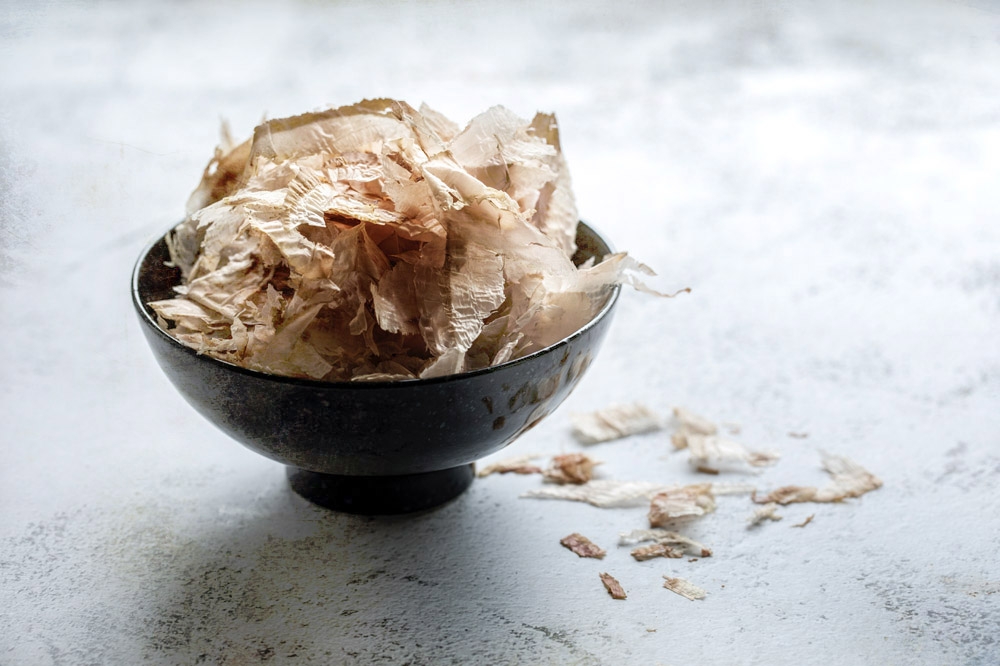
‘Katsuobushi’ (dried bonito flakes).
HOW TO MAKE DASHI
To make dashi, we first begin with kombu. According to my Kyoto cooking class instructor, the three best brands of kelp seaweed are Rausu-kombu, Ma-kombu and Rishiri-kombu.
Apparently there is a fourth variety called Hidaka-kombu, which is softer but is more suitable for eating than making dashi stock as it has a softer texture and is lighter in flavour.
By simmering kombu in water, we create a very basic stock called kombu dashi. Kombu dashi is very mild; it is used for a strict vegetarian/vegan diet.
Once we have made our base kombu or seaweed dashi, we can then add fish flakes. These are shavings from smoked and dried fish — the bigger flakes are for making soup stocks, while the smaller flakes are used as toppings.
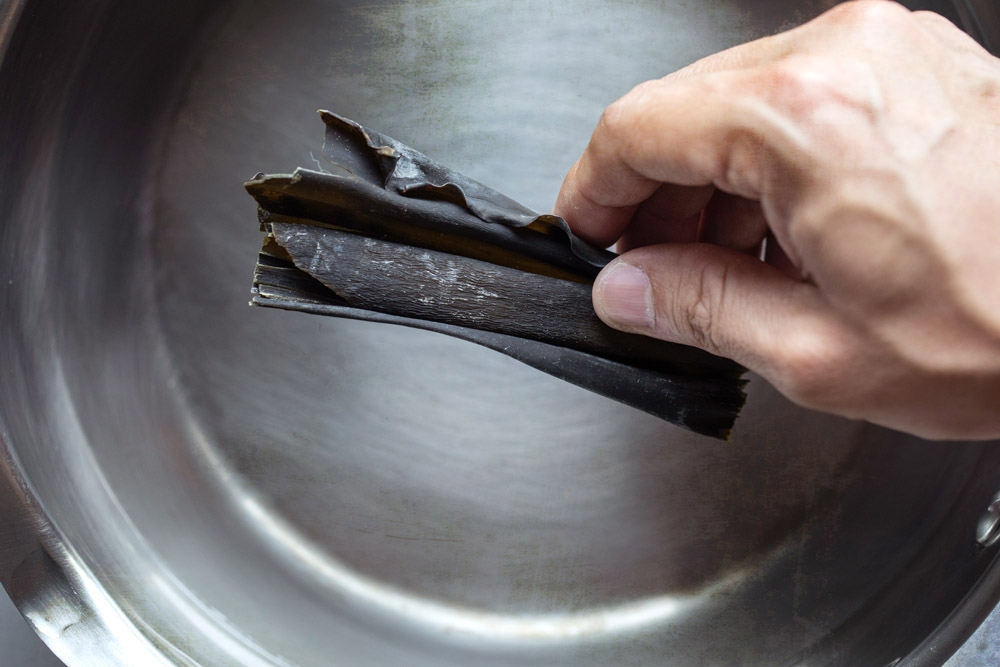
Add ‘kombu’ to a pot of water.
By adding the fish flakes to the seaweed dashi, we create awase dashi (or “combination” dashi), which is the most widely used soup stock.
Here we use katsuobushi which is made from smoked and fermented skipjack tuna or bonito. Hence they are also more widely known as bonito flakes). Other types of popular fish flakes include mackerel, sardine and tuna.
The results of the first round of boiling is your ichiban dashi or first stock. You may also combine the spent kombu and katsuobushi, and boil it with another litre of water to make niban dashi or the second stock.
This subsequent stock will be lighter in taste but still have umami flavour; you can punch up the flavour when using in recipes by adding the trinity of Japanese seasoning: shio (salt), shoyu (soy sauce) or miso.
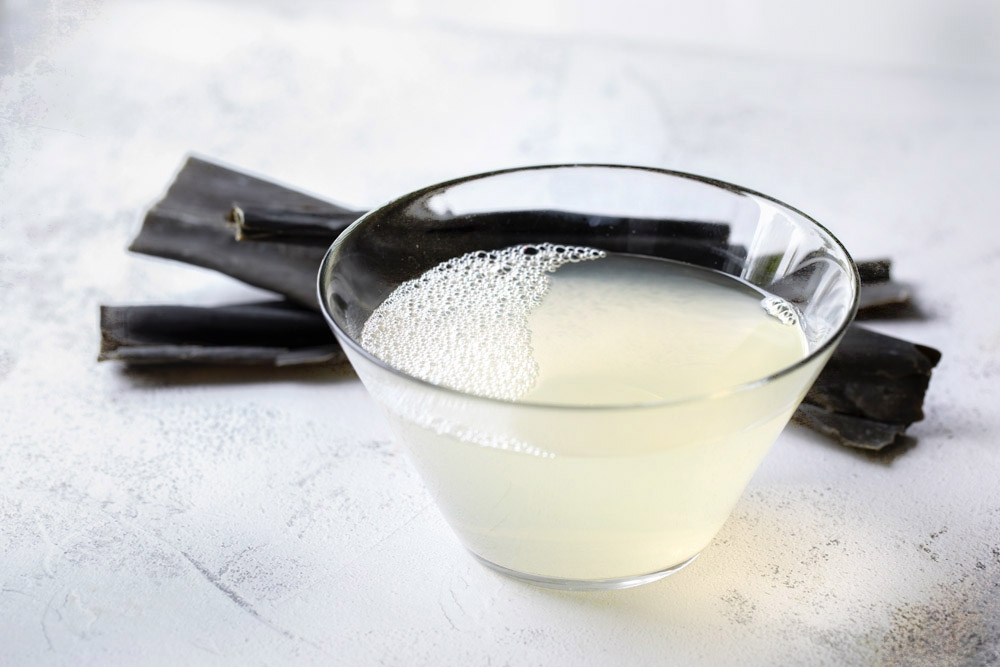
Stock made from ‘kombu’ alone is known as ‘kombu dashi’.
Don’t fret if you don’t have the time (though it really only takes about 20 minutes) or ingredients to make dashi at home.
Many Japanese families use sachets of ready made dashi powder called hondashi or dashinomoto. These are commercial, factory made dashi powder with some salt added.
In fact, most lower-end and mid-range restaurants will use dashi powder for convenience and cost savings. It’s certainly a faster method though homemade dashi stock will always be more flavourful.
Ingredients
1 litre water
10g kombu (dried kelp); approximately a 10 cm2 piece)
15g katsuobushi (dried bonito flakes)
Method
Put the piece of kombu into the pot of water. Heat it low until it almost comes to a boil.
We use a low heat else the stock might become cloudy due to the soluble fibre from the kelp.
Right before the stock comes to a boil (observe the tiny simmering bubbles), remove the piece of kombu from the pot.
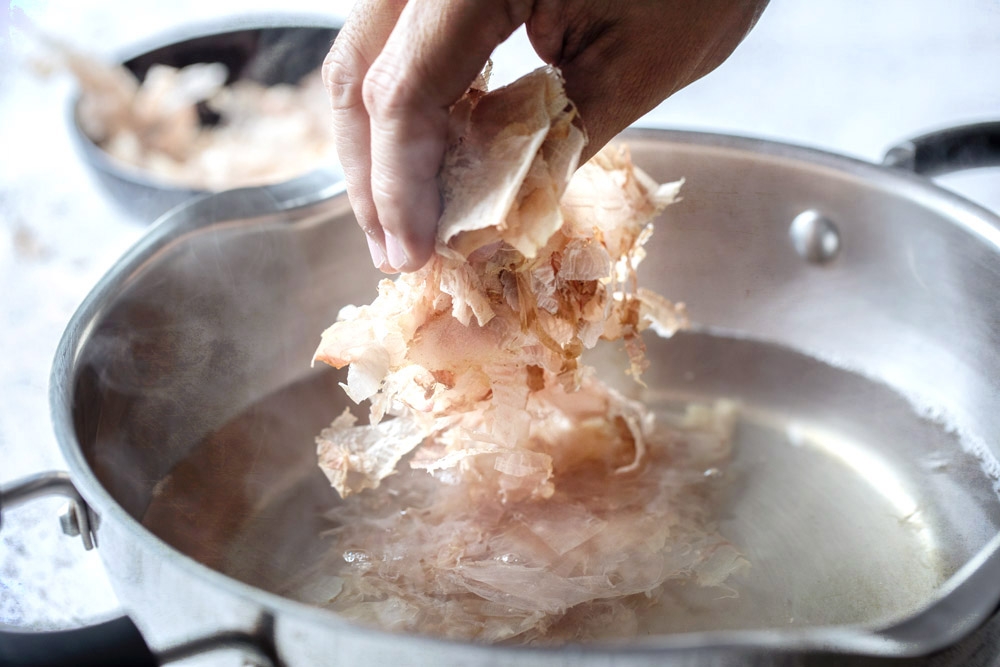
After removing the spent ‘kombu’, add the ‘katsuobushi’.
This will be your kombu dashi.
Next add the katsuobushi (dried bonito flakes) into the pot of kombu dashi. Heat it up again, till it comes to a rolling boil.
This time we can bring it to a rolling boil as bonito can take high temperatures. If you use too low a heat or simmer for too long, the flakes might dissolve into the stock and make it bitter.
Once the stock comes to a rolling boil, turn the heat off. Let the stock rest until the flakes settle down at the bottom of the pot. Strain the dashi into a bowl using a fine-mesh sieve. This will be your awase dashi, which can be used as a base for various recipes.
[ad_2]